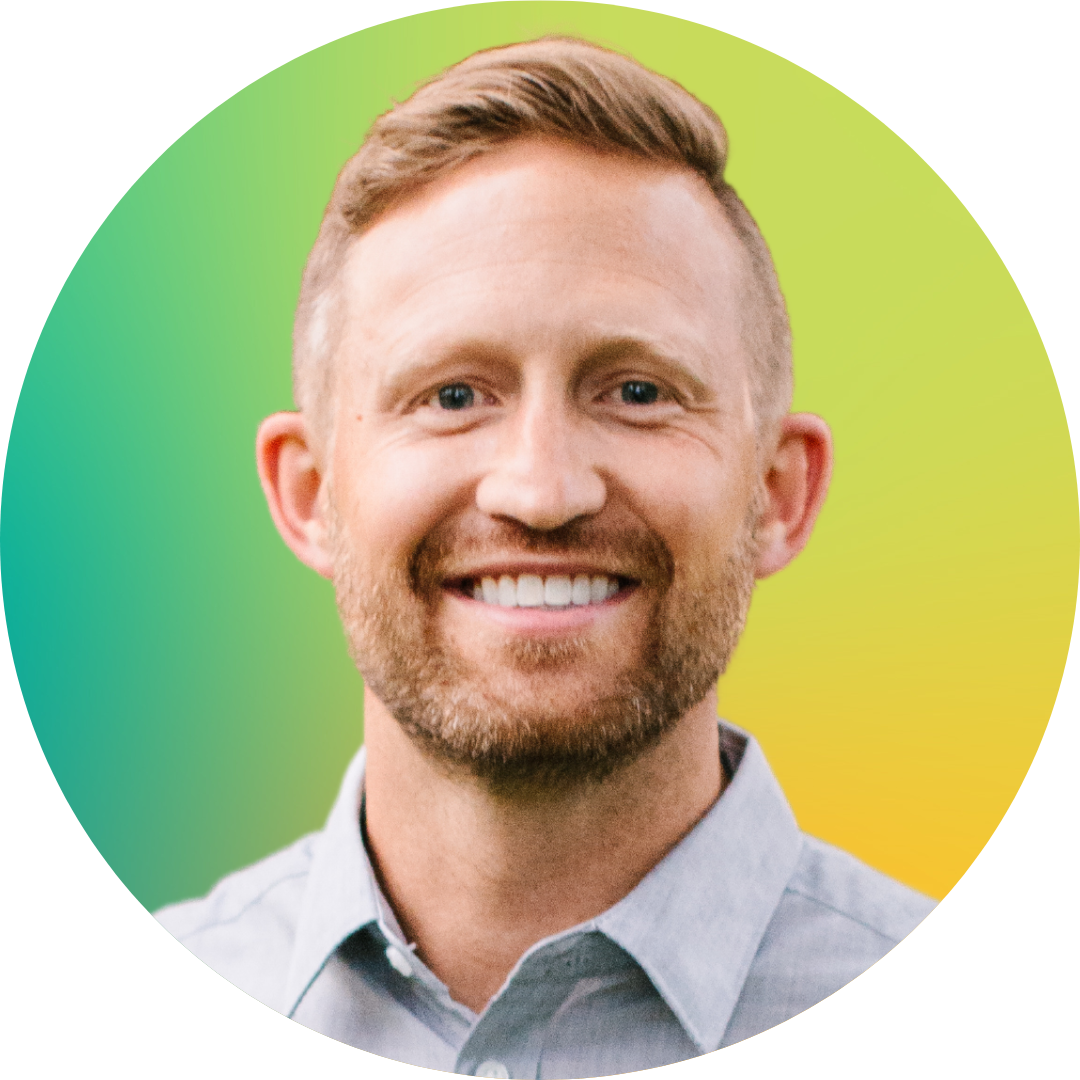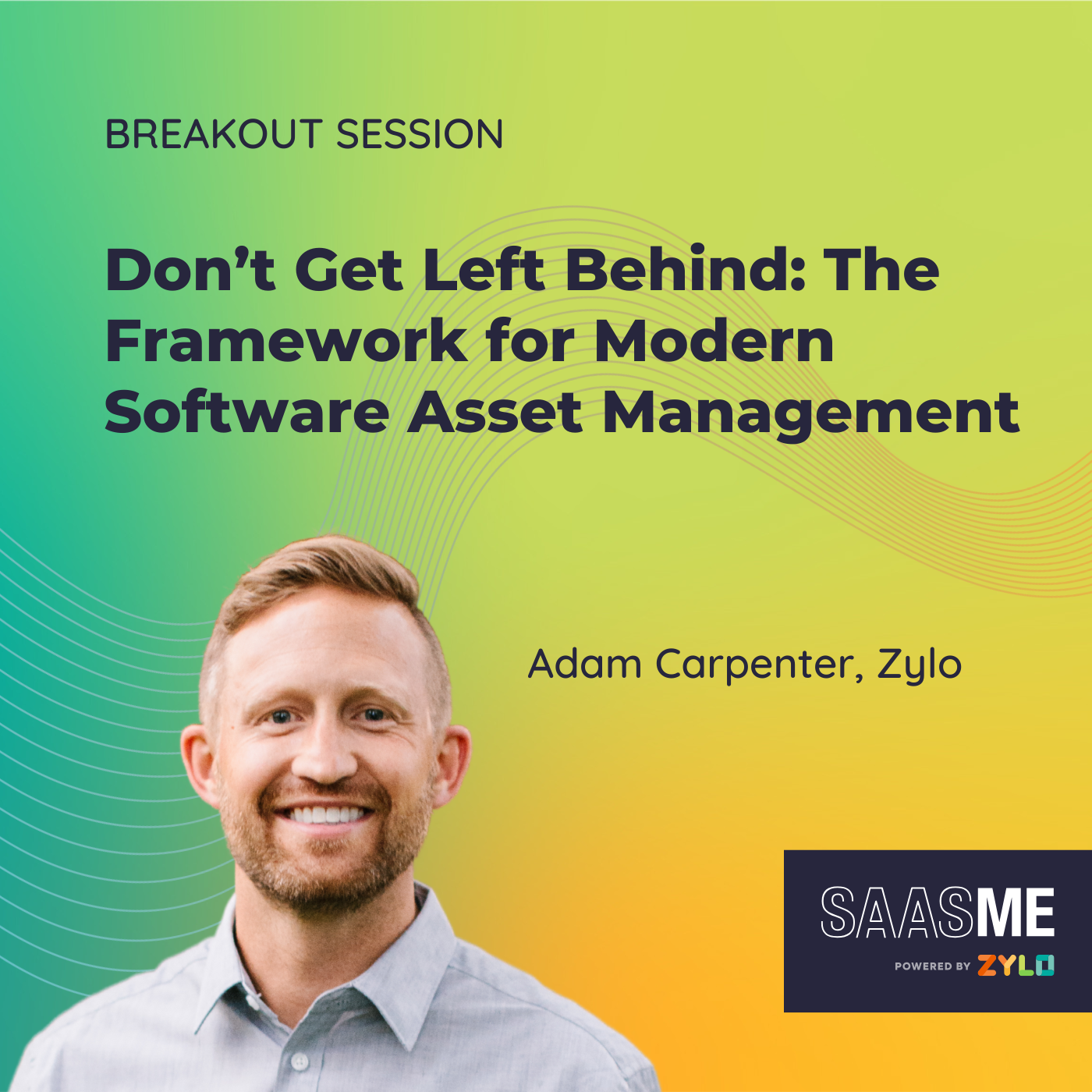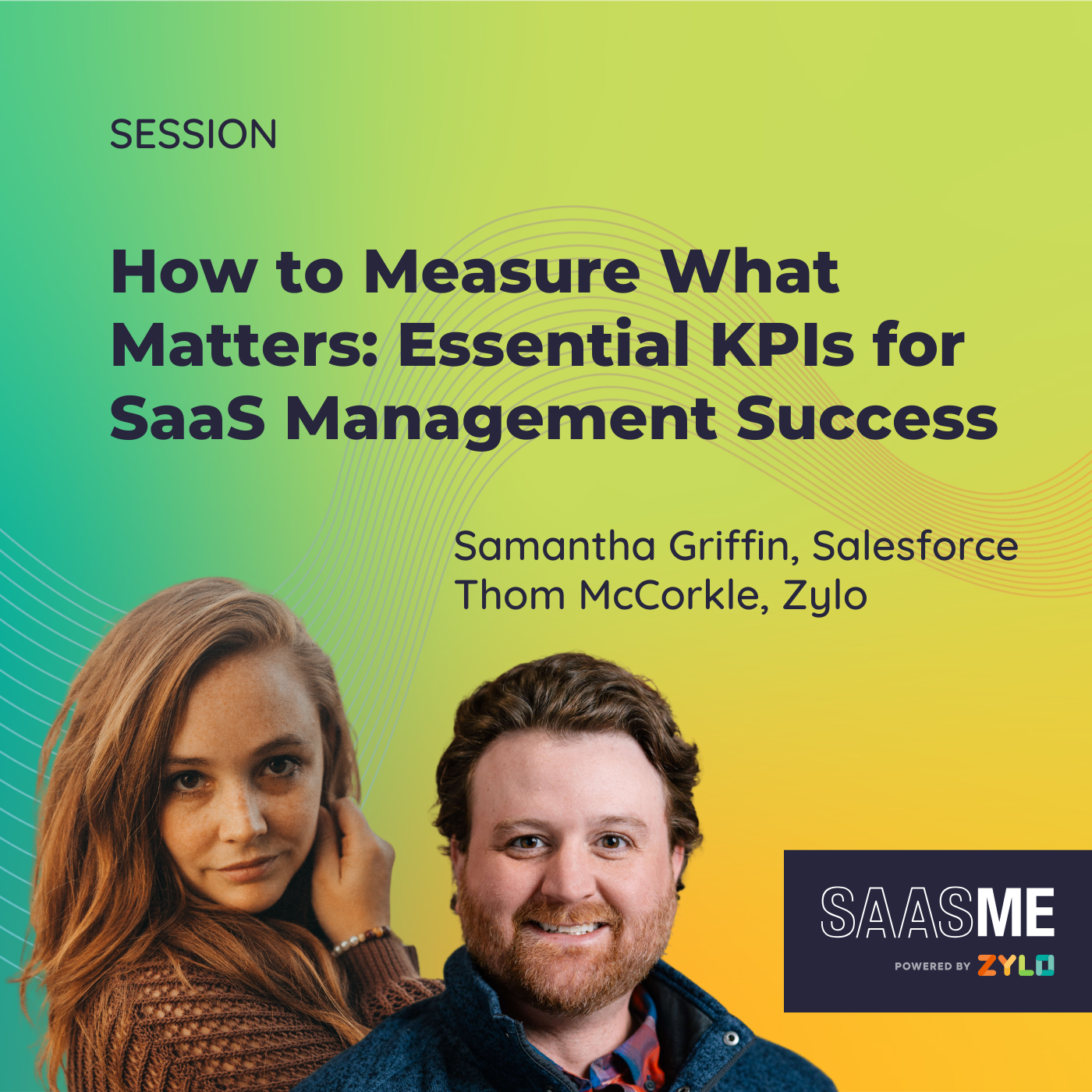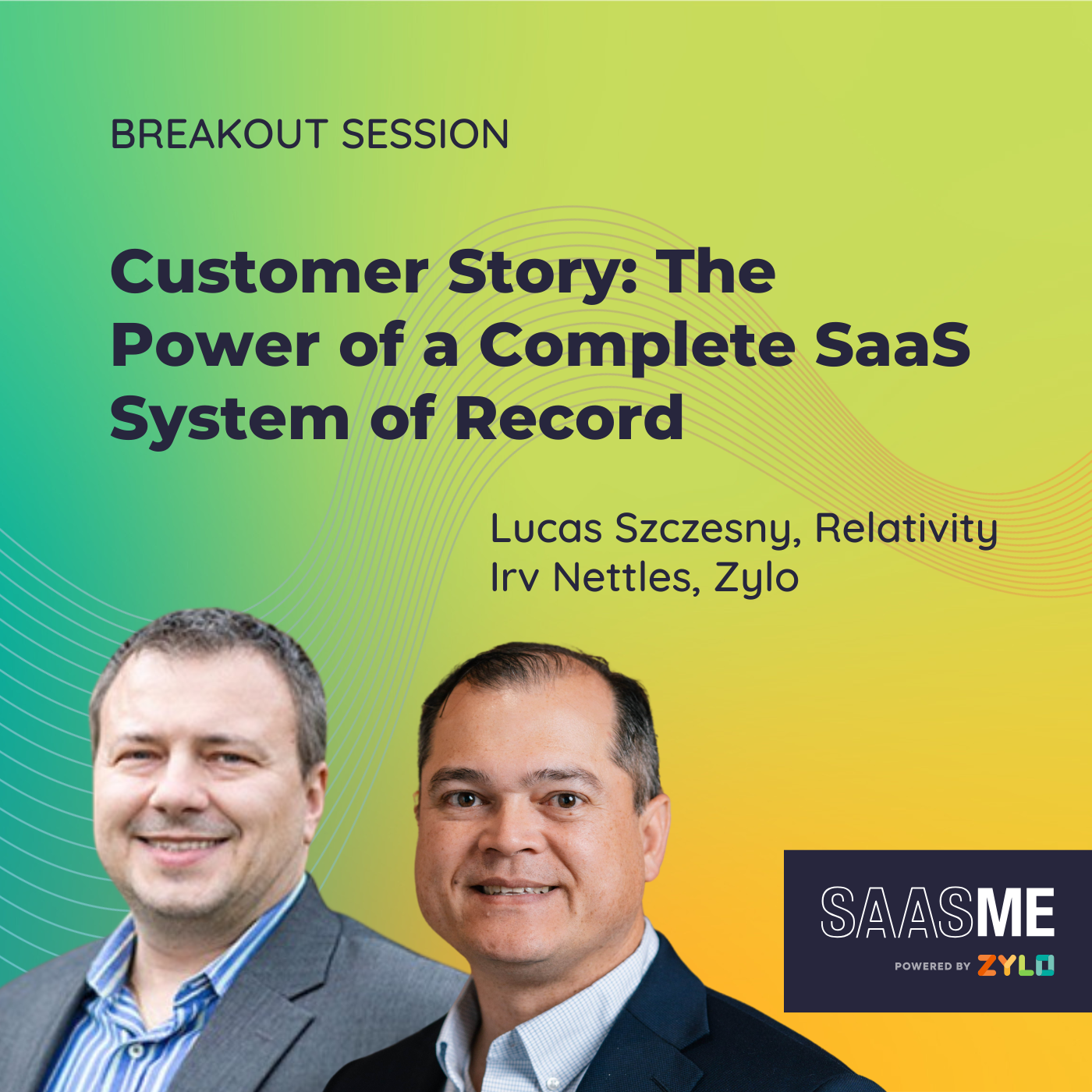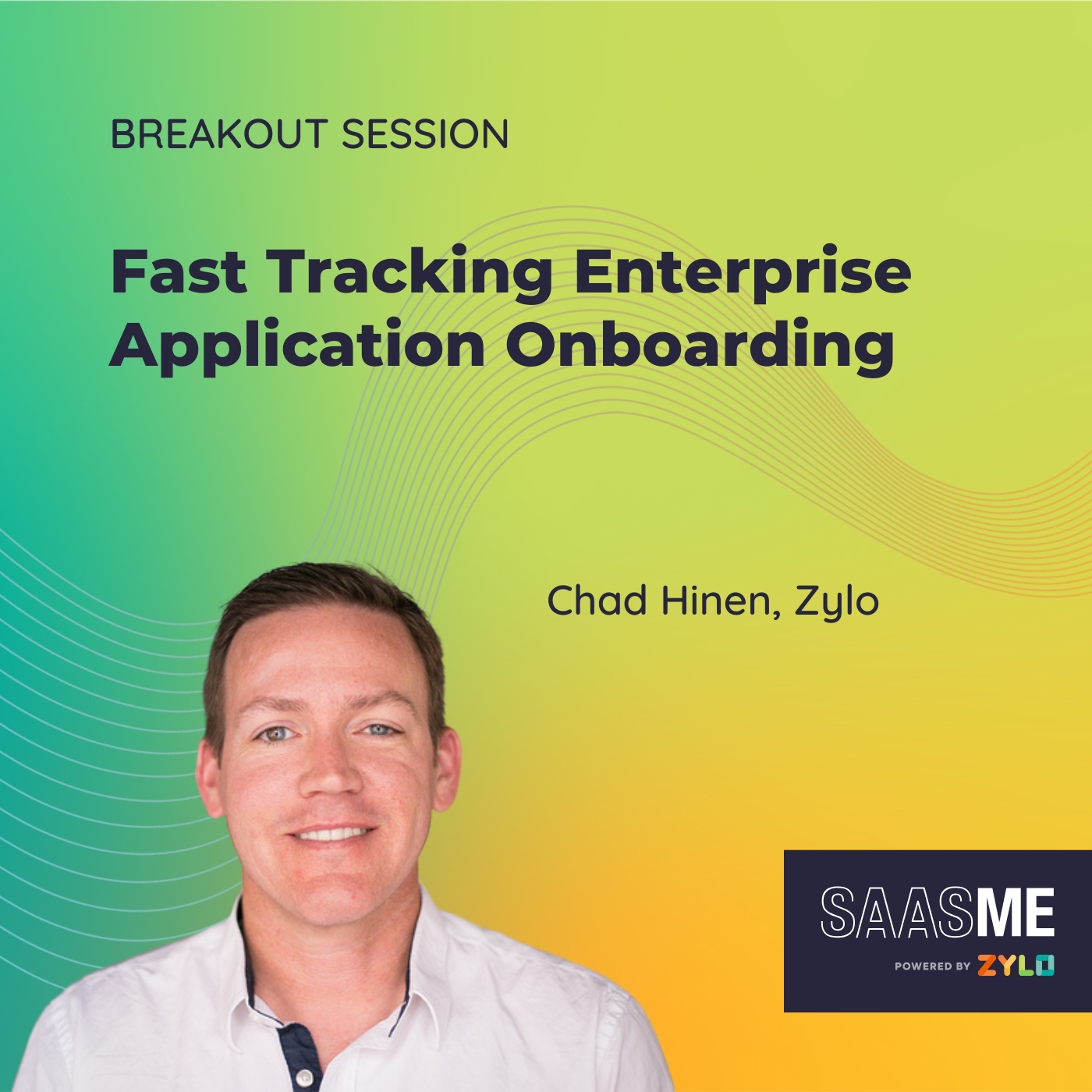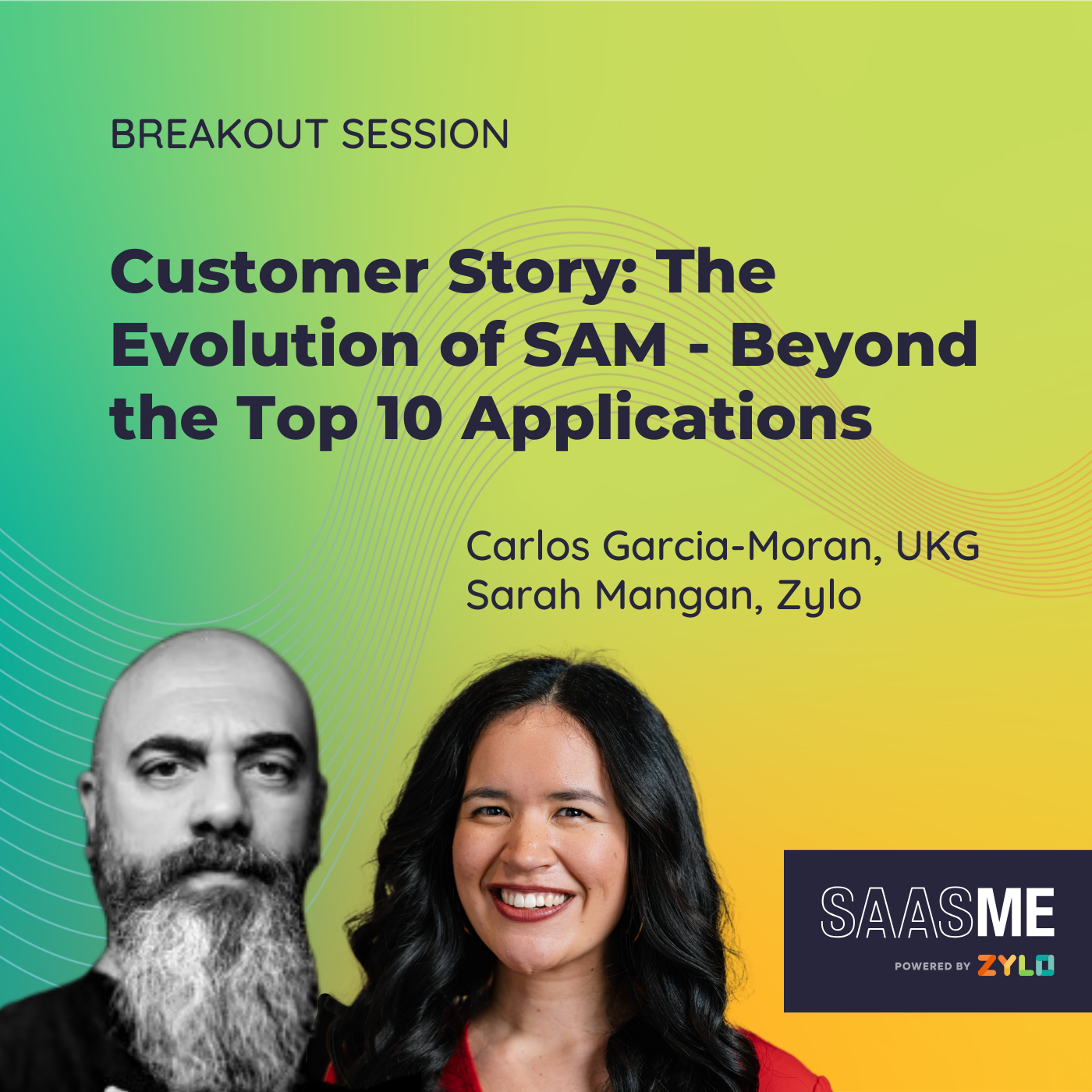Don’t Get Left Behind: The Framework for Modern Software Asset Management
- 0.5
- 1
- 1.25
- 1.5
- 1.75
- 2
Adam Carpenter: Hi everyone, and welcome to the breakout session, Don't Get Left Behind, the framework for Modern Software Asset Management. It's good to be with you today. My name is Adam Carpenter, I am an enterprise program manager at Zylo today, but years ago I was a customer of Zylo. Using Zylo, I was able to optimize license utilization and cut duplicate software bringing our tech stack from 400 apps to under 100, I was able to reduce waste and cut over 50% in our annual software spend. I used the Zylo platform for years and loved it so much I begged Zylo friends and employees to hire me, so I can teach some of the largest enterprise companies in the world how they too can experience the joy I had using Zylo. I have my dream job today and I'm happy to be here. In today's session, I'm going to provide step- by- step guidance on how to apply Zylo's proven framework so you too can optimize license utilization, reduce waste, mitigate risk across your entire SaaS portfolio. But before we get too far, I want to talk about running. I'm a runner. Well, maybe not so much in my later years in life, I do more mountain biking, but earlier in my life I used to run a lot. I could run for miles. I've ran many five K's, half- marathons, and much more. The one thing I learned in racing is the importance of keeping up with the pack, or in other words not getting left behind. Let me explain what that means. Imagine you're at the starting line of a big race. The gun goes off, you settle into your pace, you're right there with the pack where you need to be. The pack is your benchmark, it's where the strategy unfolds and where decisions are made. You push yourself matching strides knowing that if you stick with them, you have a shot at finishing strong. But then something happens, maybe you hesitate for just a moment, you took too long at a water station or misjudged your pace. The pack starts pulling away, and at first it's just a step, then a few more. You push harder, but they're getting further ahead, the gap widens. Suddenly you're running alone, no draft to pull you along, no competitors to gauge against. It's just you chasing what feels like an impossible distance. That same feeling of watching the competition slip away is exactly what happens when companies fail to modernize their software asset management. The market moves fast, and if you hesitate or you rely on outdated tools and strategies, you'll find yourself left behind. And just like in a race, once the gap forms catching up, takes twice the effort. The good news is just like a runner can train to get faster, companies can implement the right framework to stay with the pack or even break ahead. That's exactly what we are going to talk about today.
Adam Carpenter: What are the risks at hand? The traditional SAM mindset is to zero in on just maybe the top 10 or so applications. While this continues to stay important, these risks will continue to proliferate across your business if you don't shift your approach. Today that means managing all of your SaaS holistically through a prioritized approach. The three major risks are overspending, license waste, and security risks. Let's look at some stats from Gartner.
Adam Carpenter: Overspending or reducing costs has been on everyone's mind lately, hasn't it? Gartner predicts companies will overspend by 25% on SaaS through 2026. Looking at this chart you see here, where your company fits in. On the left, you will see the company size. Consider the average large enterprise, with over 10,000 employees that's 660 applications and spending, on average, 284 million on SaaS. That's a lot of money. License waste is another risk. Large enterprises with over 10,000 employees, they don't use 45% of licenses. That equates to 127.3 million of waste spend annually. Let that sink in for a minute. If you didn't hear me, I said, on average, large enterprise companies are leaving$ 127 million on the table each year. I don't know about you, but when I first heard that statistic years ago, a similar statistic, I was determined to find the waste in my company and not just get rid of it, but learned that we could reallocate it or convert that hard cost savings into delivering our top priority business outcomes. Licensing models are getting more and more complex and with the rise of AI we are seeing a greater shift towards consumption pricing. The last risk I want to talk about today is the security risk. Gartner predicts companies are five times more likely to experience a cyber security incident without centralized visibility. As you can see, there is a big chunk of apps that have poor risk scores. You see here the company size linked to the cloud confidence index ratings, that's the CCI. This is a database of cloud apps that have been evaluated based on objective criteria, adapted from the Cloud Security Alliance Guidance. These criteria measure apps, enterprise readiness taking into consideration app security, auditability and business continuity. Now let's see how we can turn these risks into opportunities.
Adam Carpenter: It all starts with outcomes and a framework. Those two things combined will make your life easier and not get left behind. Many years ago when I got into SaaS management, I had no idea what to do. I felt all alone and I felt like I was making up my own process, I was making up the tactics and the projects, I was defining objectives with my CTO and I felt like I was all alone. I'm here today to say you are not alone. After today, you'll be equipped with the framework and steps to achieve your desired business outcomes. Peter Drucker, a famous business management expert, put it simply, " You can't manage what you don't measure." His point being, if you're not measuring and tracking your progress, what you're doing isn't much better than guessing. I like to add another phrase to the end of that and say, you can't measure what you don't know. That is where we start. We start with business outcomes with what we know. Looking at the Zylo outcomes blueprint, all programs are aligned to and start with business outcomes. Ideally company level strategic outcomes that come from your C- suite. When was the last time you reviewed your company objectives? Are they easy to access or review? How often are you talking about them? In the world of software management, I suspect you'll hear common objectives that sound like these: " We need quick value to justify this investment," or, " We need to remove waste across our organization and show value to our CIO." Another one is, " We need to implement and see app rationalization savings this year." Another one is, " We need to stop auto- renewals and find waste." Isn't this a common trap? Those pesky auto- renewals get their way into all contracts, don't they? Once you understand your company's objectives, you can then start to align your objectives to these four business outcomes. This framework aligns business objectives to tactical projects or playbooks. By following the Zylo outcomes blueprints, you will not only keep up with the pack, but you'll break ahead and lead the way. Here's the list of tactics that you can align to projects. Leading the way is not always easy. It doesn't happen overnight and it takes time. You'll see at the bottom here a crawl, walk, run flow from left to right, where you start with inventory management and you work your way through license management and renewal management. Today, I will focus mainly on the crawl steps. A famous proverb I like to say is, you can't faster than you have strength. Go back to my running analogy. Think about training for a marathon. You don't just wake up one day and decide to run 26. 2 miles. You build up to it. Well, unless you're my grandpa, he woke up on his 50th birthday and decided he's going to run a marathon without training. Oh, boy, did he pay for that after the race was over? Let's not do that. Start small, learn proper form, strengthen your muscles and log those short, slow miles. That's the crawl phase. As you gain endurance, you start to increase your mileage, refine your pace, and test different strategies. Maybe you start doing speed work or hill training. That's the walk phase and you're moving, but still developing the foundation for peak performance. When the time is right, you hit your full stride and you're running confidently, pushing yourself and seeing real results. But here's the key, you can't skip steps. If you try to run before you built the strength, you'll burn out, get injured or never reach your full potential. The same applies to software asset management. If you don't start with the right foundation, strong process, clear visibility and the right tools, you'll struggle to scale. But if you build step by step, you'll not only keep up, but again, you'll lead the race, you won't be left behind.
Adam Carpenter: Today we're going to continue focusing on three focus areas, license, utilization, reducing waste, and mitigating risk as SAM professionals. The first step here is starting with a system of record. Why is this important? It all starts with visibility, it's the foundation to your enterprise SaaS management program. You can refer back to Carlos's Fireside Chat, Going Beyond the Top 10, he talked about earlier today, he'll talk about how to apply this. The definition of a system of record is a central database of all SaaS applications and associated metadata that are owned and used by a company. It can be reported against with business decisions and processes built against the data stored in it. The value of a SaaS system of record is that data is centralized and able to be integrated to improve efficiency and drive productivity. What does all of this mean? In my previous role, let me give you an example. As a post- merger integrations manager, we merged five companies into one company all at the same time. Not your typical way to merge companies. Usually you have one or two companies merging into a parent company. This one was much different. It was like a blended family that came together all at once and we had to figure out how to get along. With that came its challenges. Each company that came together had their own tech stacks, they had their own processes, they had their own systems, and they had their own way to document and record all software and the tech stack as a system of record. It was my role to help the company come together to figure out where is everything? How does everything work? Who are the owners? Where do we keep track of the contracts? How do I update order forms when I sign a new one? How do I go through license utilization? The list goes on. There were so many questions and without this one system of record documented, we wouldn't have been able to get through the hard times that we went through. Our customers use Zylo as the SaaS system of discovery. Trust me, this is much better than using a spreadsheet. Let me ask you this. When was the last time you used a paper map? Do some of you even remember what that is? A paper map. Using a spreadsheet to manage software is like using a paper map in the digital world. While it's possible, yes, you can get to your destination, but what about all of the real- time updates, the dashboards, the step- by- step turns, the alerts, the traffic alerts if there's something ahead, you don't have any of that. You have to move into a digital era and stop using those digital maps, aka spreadsheets.
Adam Carpenter: The next topic is license optimization. This tactic is linked to the outcome avoidance of unnecessary and preventable costs. The definition of this is business process of understanding your user license position, the utilization of provisioned licenses and the reclamation of unused or underused licenses. I think the value here is self- defined with minimizing costs and ensuring compliance. Looking at the crawl step on your left, you always want to start with integrations, app discovery and onboarding. That's the key to getting all of this in place. Once you have the SaaS software management tool and you have everything in one place, you can now start to see what's next. You can start reviewing the data and understand where we need to go. This is where we can start running reports on Salesforce, for example. Back to my example. As we merged five companies into one, we had a software called Salesforce. I worked with the company and grew 20% in the first year. We were hiring more and more people and they all needed Salesforce access. As we went through an evaluated license optimization for the company, we noticed that we were already paying for a pool of Salesforce licenses, and we ran reports to find out that we have some users that haven't logged in for over 30 days, some over 60 days, so what we did is we set up some workflows to find and free up those licenses, and that's what you can do using Zylo. Here's a screenshot in Zylo where you can see and set up alerts and automations to do that work for you. You can also set up alerts to help alert you when you find new software and make sure that you're utilizing the software properly.
Adam Carpenter: Risk management is a tactic link to the outcome, continuously maintained record of compliance. The definition of this is a comprehensive approach to identifying, assessing, and mitigating risks associated with SaaS applications. The value here is the centralized visibility of apps, users and usage, all mapped to risks. Here we identify all the licenses assigned to users who have left the company and pull back those licenses. I don't know about you, but I've been in those situations where you go a month or two, maybe three months, and you pull reports and you find users who still have access to your systems. That's risky, and that needs to be resolved as soon as possible. Here, we can work with your CISO, maybe, or your cybersecurity team to proactively prioritize those risky apps. You can remove and replace them on your tech stack and using Zylo you can see what the CCI score is. You might ask, what is the CCI score? Well, it's a database of cloud apps that has been evaluated based on objective criteria adapted from Cloud Security Alliance guidance. These criteria measure app enterprise readiness, taking into consideration app security and audit ability and business continuity, as we've already previously talked about. Here's a screenshot of what risk management looks like in Zylo. The theme here you should leave with is proactiveness. What does that mean? That means to monitor constantly. That means you can see around the corners. You can be part of the team with your cybersecurity team and help give them advice on where to go and what is most important.
Adam Carpenter: In summary, there are three key takeaways. The traditional SAM mindset is to zero in on maybe just the top 10 apps or so while continuously staying and keeping these risks to continue to proliferate across your business if you don't shift. Today, that means managing all your SaaS holistically. That's the goal. You need to start using a SaaS system of record, somewhere where you can keep track of everything. And don't be shy, if you're behind, admit it and come and catch up with the pack. You can keep up with everybody and come to lead. Start using the Zylo outcomes blueprint. This is a good reminder for all of us that we know that are others in the same community that are here to help. And remember it always starts with visibility, leading up to license, utilization and managing risk. Thank you for taking the time to be with me today. Here is some QR codes if you're looking for more details around your SaaS management starter guides, please review and share with others. Thank you for your time. Have a good day.
DESCRIPTION
As SaaS adoption accelerates, you need to evolve your SAM approach to stay ahead. In this session, get step-by-step guidance on how to apply Zylo’s proven framework to optimize license utilization, reduce waste, and mitigate risk across your entire SaaS portfolio. This modern approach will help you drive significant cost savings and maximize software value, empowering you to become more strategic and equipped for long-term success.
Speakers:
- Adam Carpenter, Enterprise Program Manager at Zylo
Today's Guests
